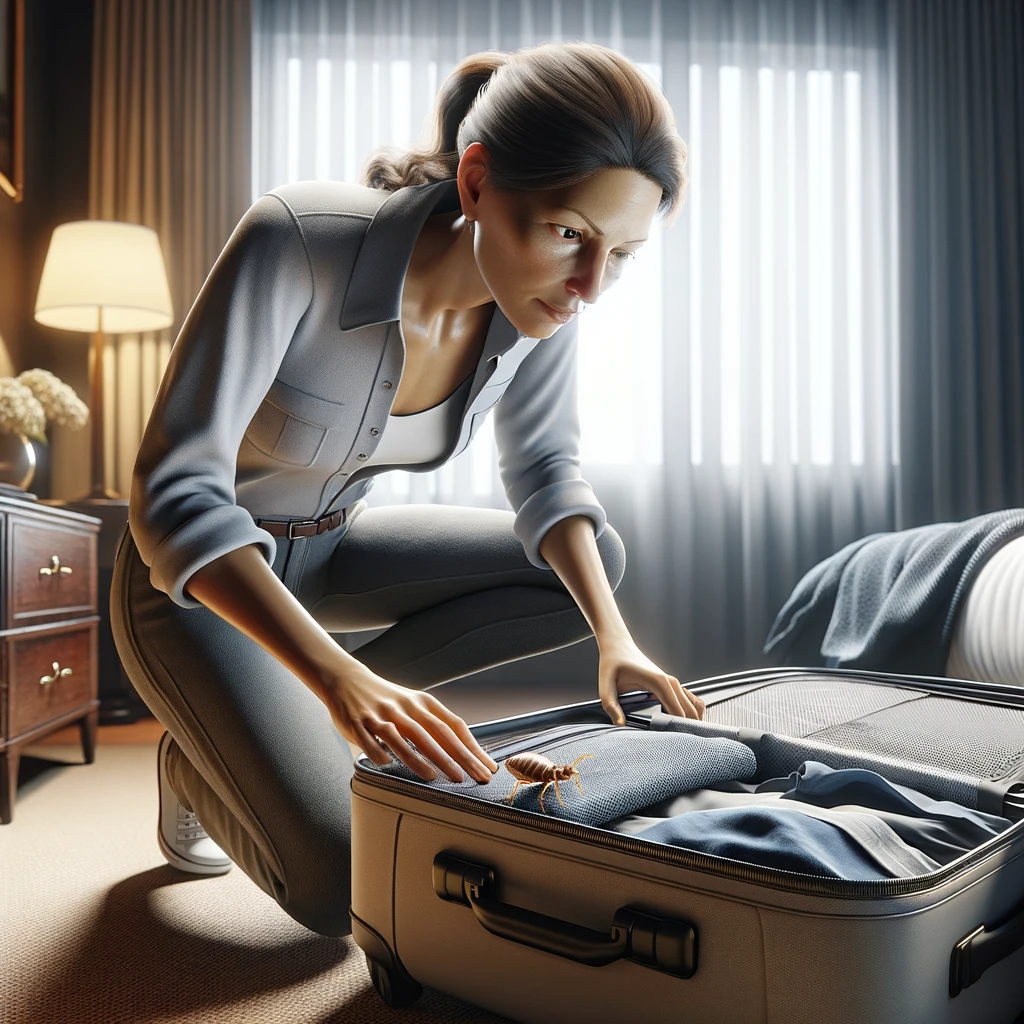
Traveling can be an exciting experience, but it's important to be aware of the potential risks that may come with it. One common concern for travelers is the presence of pests, particularly bed bugs. These tiny insects can easily hitch a ride on your luggage or clothing and make their way into your home, causing a major headache. In this comprehensive guide, we will delve into the world of pests, specifically bed bugs, and provide you with valuable tips on how to identify and prevent them while traveling.
Before we dive into the specifics of bed bugs, it's crucial to have a basic understanding of common pests you may encounter while traveling. From ants and cockroaches to fleas and mosquitoes, different types of pests can wreak havoc on your trip if not properly addressed. Taking the time to educate yourself about these pests and their habits can help you better protect yourself and your belongings.
Ants, known for their impressive strength and teamwork, can quickly invade your food supplies if left unattended. Cockroaches, with their ability to survive in harsh conditions, are notorious for spreading diseases and triggering allergies. Fleas, often brought in by pets, can infest your living spaces and cause itchy bites. Mosquitoes, the pesky blood-suckers, not only leave behind irritating bites but also pose health risks by transmitting diseases like malaria and dengue fever.
While our focus is on bed bugs during travel, it's essential to understand that preventing pest infestations starts at home. Maintaining a clean and clutter-free living environment, sealing cracks and crevices, and regularly inspecting your belongings are some effective preventive measures you can take. By keeping pests at bay in your home, you decrease the chances of bringing them with you on your journeys.
Regularly disposing of garbage, fixing leaky pipes, and storing food in airtight containers are additional steps you can take to prevent pest infestations. Inspecting second-hand furniture and clothing for signs of pests before bringing them into your home can also help avoid introducing unwanted critters. Remember, pests are opportunistic and can find their way into your living spaces through the tiniest of openings, so staying vigilant is key to keeping them at bay.
Among all the pests that can plague travelers, bed bugs are by far the most dreaded. These elusive creatures thrive in hotels, motels, and other accommodations where there is a high turnover of guests. Their ability to hide in tiny cracks and crevices makes them difficult to detect and eradicate. However, armed with the right knowledge and precautions, you can minimize your risk of encountering them.
When it comes to bed bug prevention, awareness is key. One of the best ways to avoid bed bugs while traveling is to carefully research and choose accommodations with a reputable track record of cleanliness. Reading online reviews and checking for any past reports of bed bug issues can give you valuable insights. Additionally, keep your luggage elevated off the floor and inspect your room thoroughly upon arrival for any signs of bed bug activity.
But what are the signs of bed bug activity? Well, bed bugs leave behind several telltale signs, such as dark spots on the mattress or sheets, tiny blood stains, or even a sweet, musty odor. These signs may not always be obvious, so it's important to be thorough in your inspection. Don't forget to check the headboard, behind picture frames, and even inside electrical outlets. Remember, bed bugs are master hiders!
Furthermore, another effective preventive measure is to use bed bug-proof encasements on your luggage. These specially designed covers can prevent bed bugs from hitching a ride on your belongings and infesting your home. Investing in a good quality encasement can provide you with peace of mind during your travels.

Even with all the precautions, there is still a chance that you may come across bed bugs during your travels. If you do encounter them in your hotel room, it's crucial to handle the situation promptly and appropriately. Firstly, notify the hotel management immediately to inform them of the issue. Request a different room, preferably not adjacent to the infested one. Remember to inspect the new room as well before settling in.
Now, you might be wondering, what should you do if you accidentally bring bed bugs back home with you? Well, the first step is to avoid panic. While it can be distressing, there are steps you can take to prevent a full-blown infestation. Start by washing and drying all your clothes on high heat. Vacuum your luggage thoroughly, paying close attention to seams and pockets. If you're still concerned, consider contacting a professional pest control company to assess the situation and provide appropriate treatment.
There are numerous myths and misconceptions surrounding bed bugs, leading to unnecessary fear and panic. One common misconception is that bed bugs are only found in dirty or unhygienic places. However, bed bugs can infest even the cleanest of accommodations. Another myth is that bed bugs are exclusively found in beds. While they do prefer mattresses and box springs, they can also hide in other furniture, luggage, and even clothing.
It's important to note that bed bugs are not a reflection of personal hygiene or cleanliness. They are opportunistic pests that can be found in any environment where humans are present. So, don't blame yourself if you encounter them during your travels. Instead, focus on taking the necessary precautions to protect yourself and minimize the risk of bringing them home.

Once you return home from your travels, it's essential to inspect your luggage carefully for any signs of bed bugs. Start by unpacking your belongings outside of your living area, such as in the garage or on a hard surface. Carefully go through each item, paying close attention to seams, folds, and pockets where bed bugs may hide. If you discover any signs of infestation, quarantine the items and seek professional assistance if necessary.
Additionally, consider using a portable bed bug heater or steamer to treat your luggage before bringing it back inside your home. These devices can help kill any potential bed bugs or eggs that may have hitched a ride. Taking these extra precautions can provide you with peace of mind and ensure that you don't inadvertently introduce bed bugs into your living space.
By following these preventive measures and staying vigilant during your travels, you can significantly reduce the risk of encountering bed bugs. Remember, preparation and awareness are your best tools in the fight against these pests. With the knowledge gained from this ultimate guide, you can confidently embark on your next adventure, knowing you are better equipped to handle any potential bed bug situation that may arise.